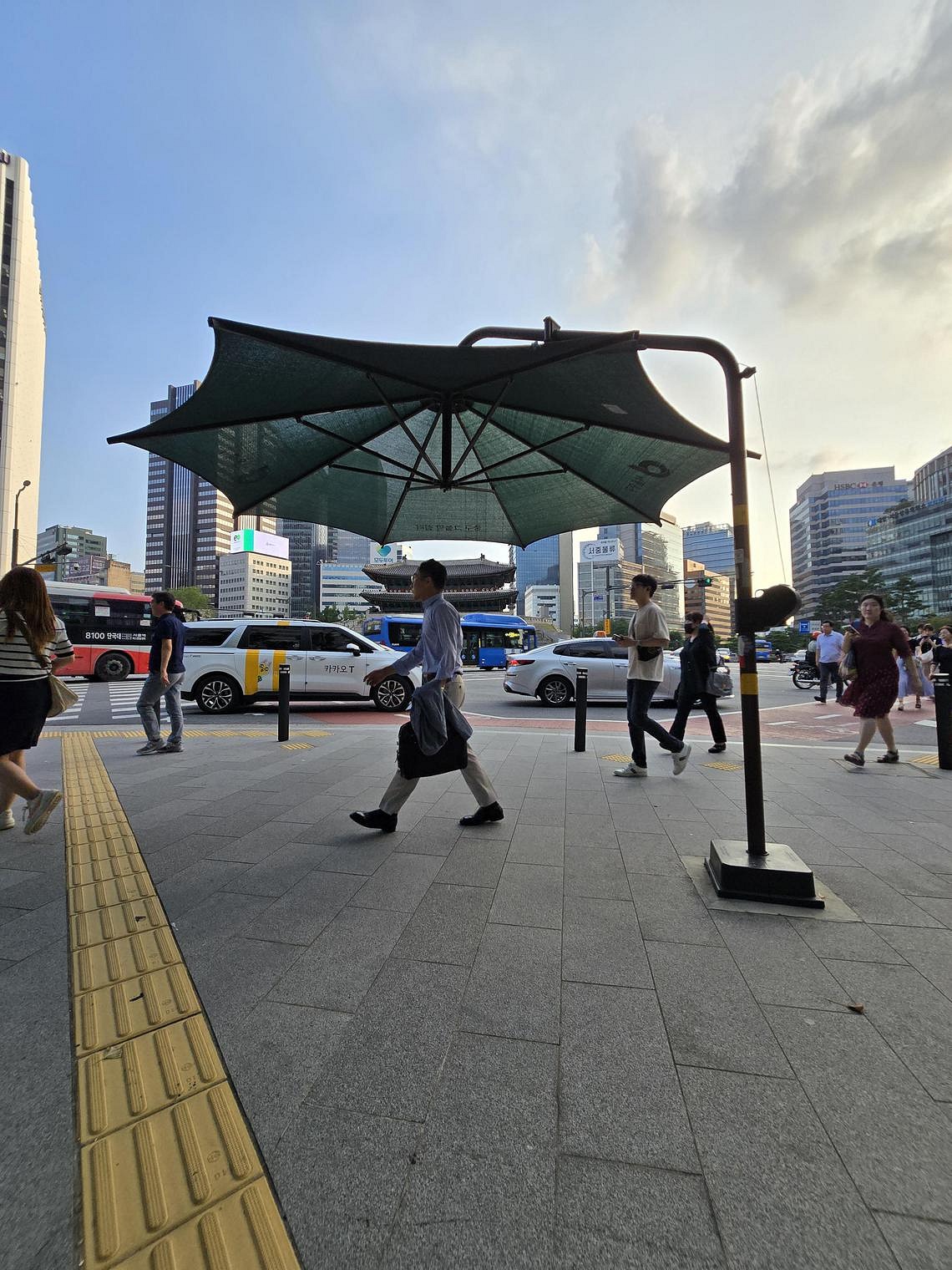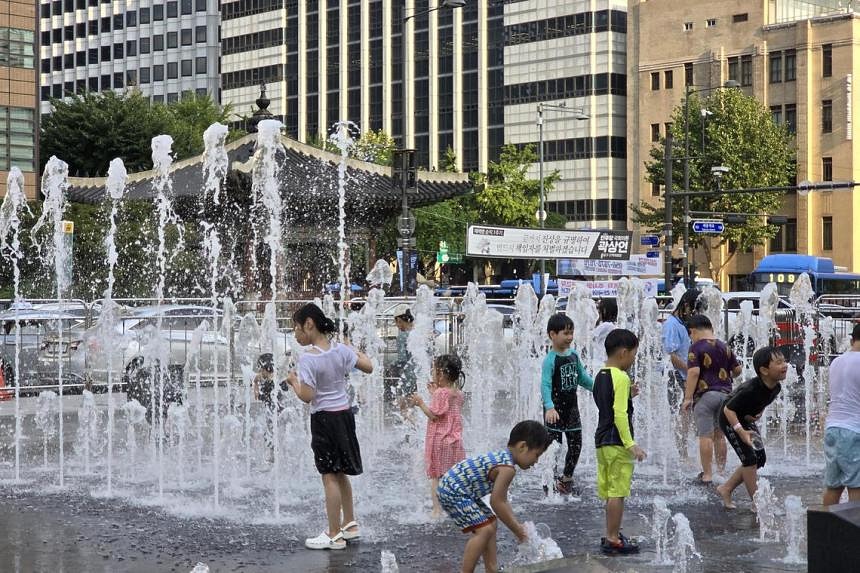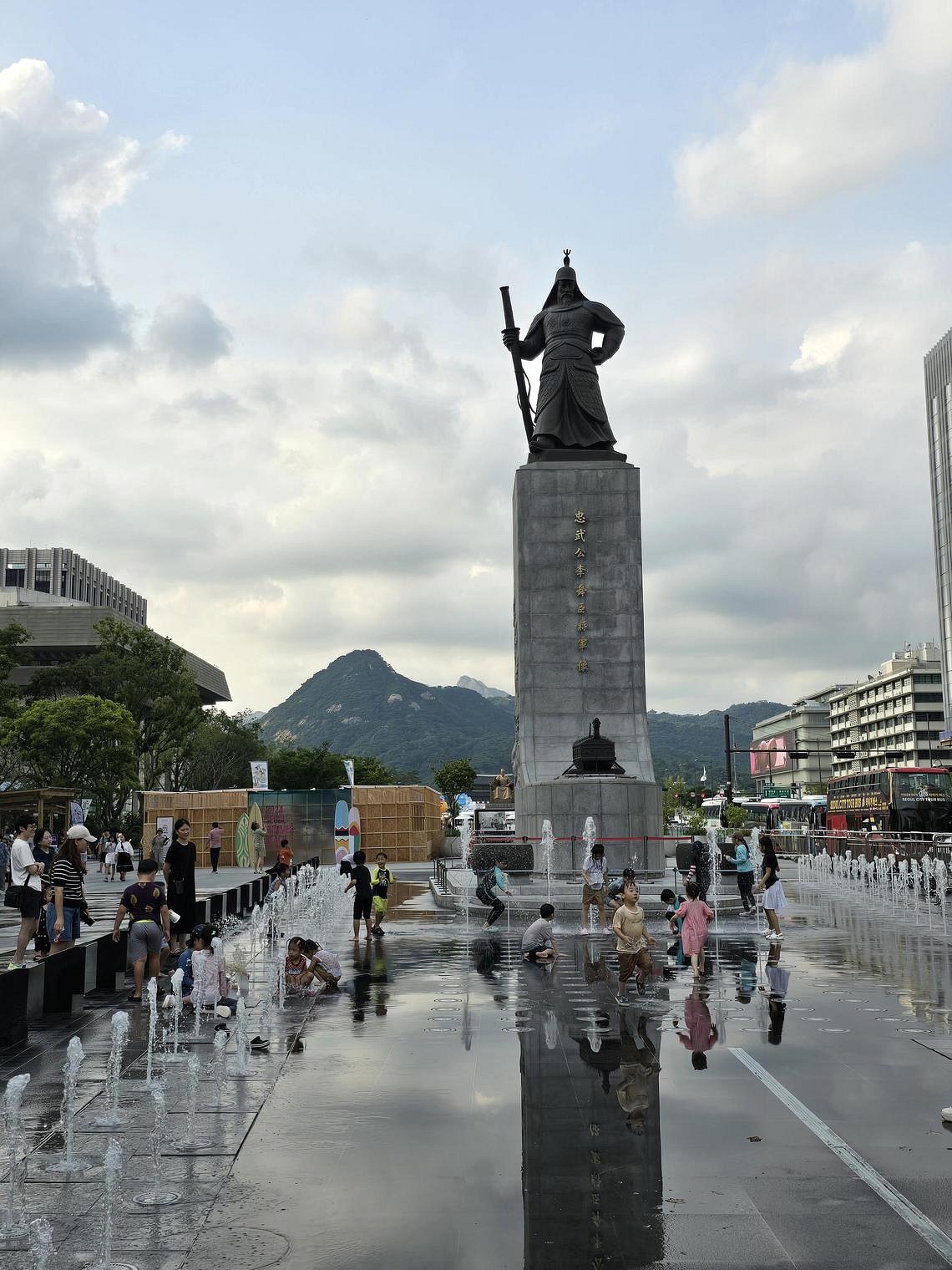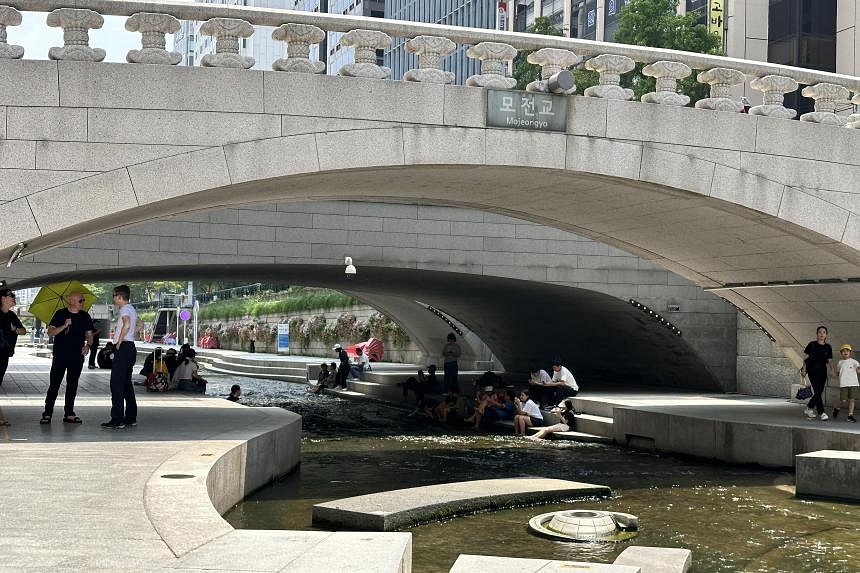SEOUL – Steam, sizzle, scorch and boil.
As South Korea swelters under summer heat that looks set to break records, newspaper headlines are using words mostly reserved for describing high-heat culinary techniques.
“The nation sizzles on a rest day, steaming in cauldron heat,” said one on Aug 4. Another noted: “Nation continues to scorch as heatwave and tropical nights continue.”
Since the summer monsoon season ended on July 24, South Korea has been baking under a heatwave, with advisories issued for the entire country except for its highest point, Mount Hallasan in Jeju.
The Korea Meteorological Administration (KMA) issues such advisories when there are at least two consecutive days with daytime temperatures of above 33 deg C.
On Aug 4, the temperature rose to 40 deg C in Yeoju city, two hours’ drive from Seoul. It was the first time since August 2018 that the mercury breached the 40 deg C mark.
South Korea’s hottest summer was in 2018, when a temperature of 41 deg C was logged in Hongcheon city, one hour’s drive east of Seoul.
The Korea Disease Control and Prevention Agency reported five heat-related deaths over the Aug 3, 2024, weekend, and the total number of such deaths recorded since May 20 has risen to 14 as at Aug 6. Nearly 1,700 heat-related illnesses were reported in the same period.
Even livestock were not spared, with nearly 303,000 deaths reported, mostly of poultry. Large numbers of pigs, which are vulnerable to heat, have also died.
In Jeju, where more than 800 pigs have died in the past month, livestock authorities in charge of the prized black pig species native to Jeju have been checking the animals’ temperature twice daily and cooling them down with fans and air-conditioners.
As temperatures soared over Aug 3 and 4, there were reports of power outages and water supply disruptions as people sought to cool themselves.
On Aug 2, a professional league baseball game in Ulsan city, in the southern part of South Korea, had to be cancelled for the first time in the league’s 42-year history, as “feels like” temperatures on the artificial grass pitch rose to more than 50 deg C.

In Seoul, parasols offering shade to pedestrians are commonly found at traffic junctions. This photo was taken near Sungnyemun gate at Namdaemun market in Seoul on the evening of Aug 1. ST PHOTO: WENDY TEO
Another baseball game in Seoul that had proceeded in the heat on Aug 3 saw five spectators rushed to hospital for heat-related reasons.
The KMA has forecast that the ongoing heatwave, with daytime temperatures nearing 40 deg C, is likely to continue until Aug 14.
Over in China, CCTV News reported that last month’s raging temperatures made it the hottest July in history. Cities in the east suffered the most as Shanghai experienced temperatures of over 37 deg C while the mercury soared past 40 deg C in Zhejiang province.
A Shanghai woman surnamed Wu told Global Times that she went to a park on Aug 4 after breakfast for exercise and had heatstroke within an hour.
In Japan, where the Japan Meteorological Agency (JMA) also recorded the hottest July temperatures since 1898, there have been 59 reported deaths from heatstroke since April. The JMA and Japan’s Environment Ministry have issued heatstroke alerts for 26 out of 47 prefectures, including Tokyo, Osaka and Kagoshima.
In North Korea, it was reported that summer holidays for elementary school students started one month early, on July 1 instead of Aug 1, because of the extreme summer heat.
A North Korean source based in Sinuiju city, which faces Dandong in China’s Liaoning province, told the Daily NK news organisation that the Education Ministry issued the directive to prevent students from collapsing. Classrooms there do not have air-conditioners or fans.

Children cooling off in the water feature at Gwanghwamun Plaza in Seoul on Aug 1. ST PHOTO: WENDY TEO
The heatwave affecting the Korean peninsula is a result of the convergence of Tibetan and North Pacific high-pressure systems over the area. These weather systems have higher pressure than the surrounding air, causing high surface temperatures in summer months, as the high pressure pushes warm air towards the ground.
Mr Kim Seung-bae, director of the Korea Natural Disaster Association, who has been appearing on South Korean TV news channels to explain the heatwave crisis, likened the situation to being trapped under two thick blankets.
“There is already the summer heat from solar radiation, and the North Pacific high-pressure system adds a layer to this, making the air hotter. On top of that, there is still the Tibetan high-pressure system, adding yet another thick blanket,” he said.
“This is called coupling of the high-pressure systems, and when this happens, we inevitably experience even higher temperatures.”
Mr Kim said there needs to be a release in either of the high-pressure systems for temperatures to start falling, which he thinks may happen as soon as later this week.
To prevent more heat-related illnesses and deaths, South Korean Prime Minister Han Duck-soo has directed the Interior Ministry to take charge of inter-ministry heatwave efforts.
On Aug 1, the ministry announced a 15 billion won (S$14.5 million) budget for heatwave countermeasures, such as the distribution of umbrellas, electric fans and salt supplements. It upgraded its crisis response posture to the highest level on Aug 1, designating the heatwave as “serious”. It has also dispatched on-site crisis response teams across the nation.

Children on their summer school break enjoying the water feature at Gwanghwamun Square in Seoul. ST PHOTO: WENDY TEO
The elderly and outdoor labourers have been identified as the groups most vulnerable. Special care packages will be distributed to the elderly, while the Labour Ministry has issued advisories in various languages to keep foreign workers informed.
Tea farmer Gu Hye-jin, 57, ended up in hospital on Aug 3, after working in 35 deg C heat that day.
He had been out in the fields for a few days in a row to weed his 13,000 sq m tea estate in South Korea’s southern county of Hadong, given the abundant growth of weeds in summer. Lamenting that he should have done his chores in moderation and was now “paying the price” of his folly, he said in an Instagram post that he is resting at home after receiving treatment.
Office worker Park Sun-mi, 40, who was in Singapore on vacation and returned to Seoul on Aug 3, said she was shocked by the heat and humidity that hit her the moment she landed at Incheon International Airport.
“It made me feel so much hotter and sweatier than I was in Singapore, which was funny, because people were warning me about Singapore’s tropical climate before I left on my trip,” she said.



Recommended Comments
Join the conversation
You can post now and register later. If you have an account, sign in now to post with your account.
Note: Your post will require moderator approval before it will be visible.